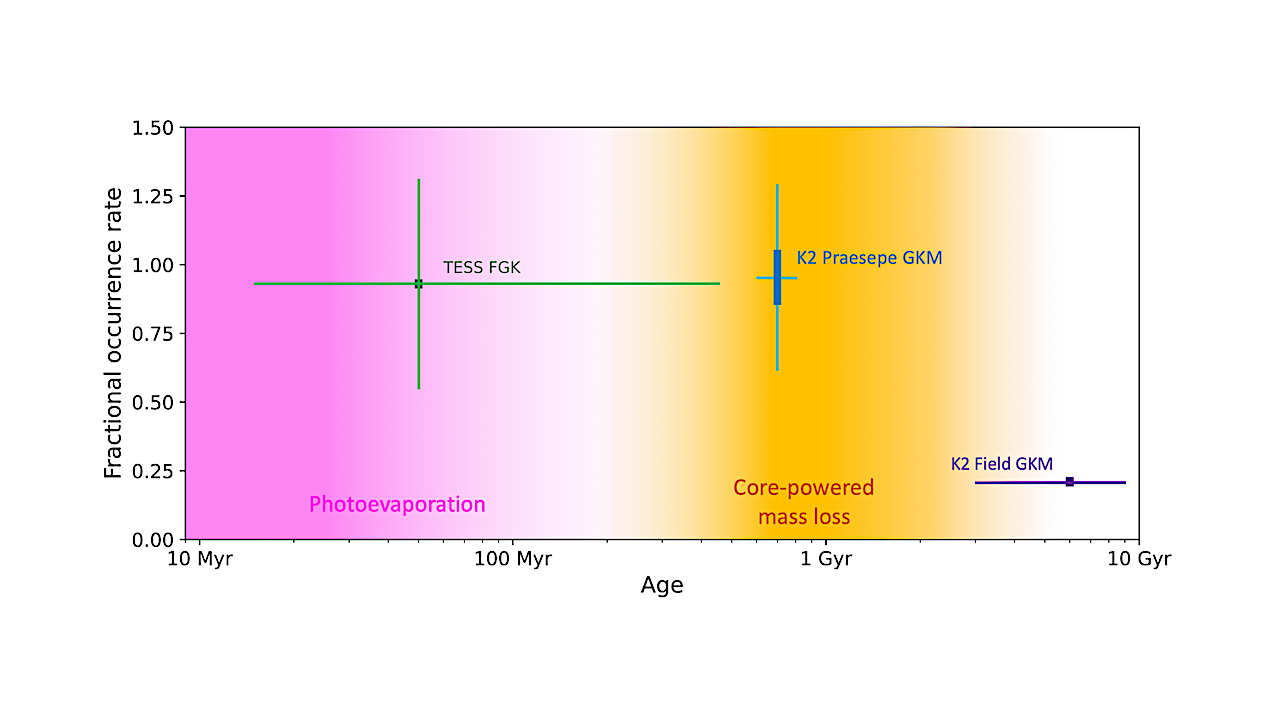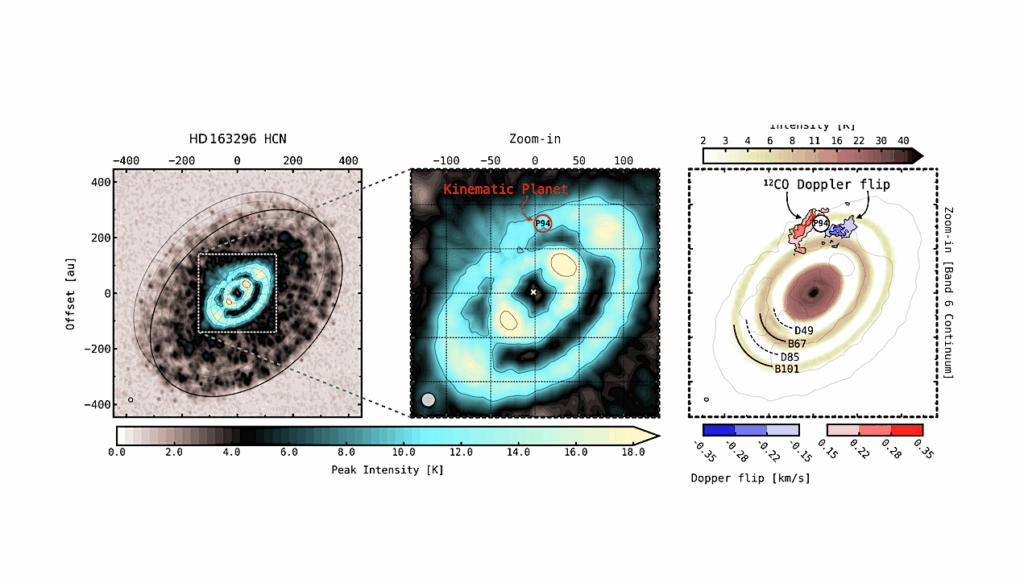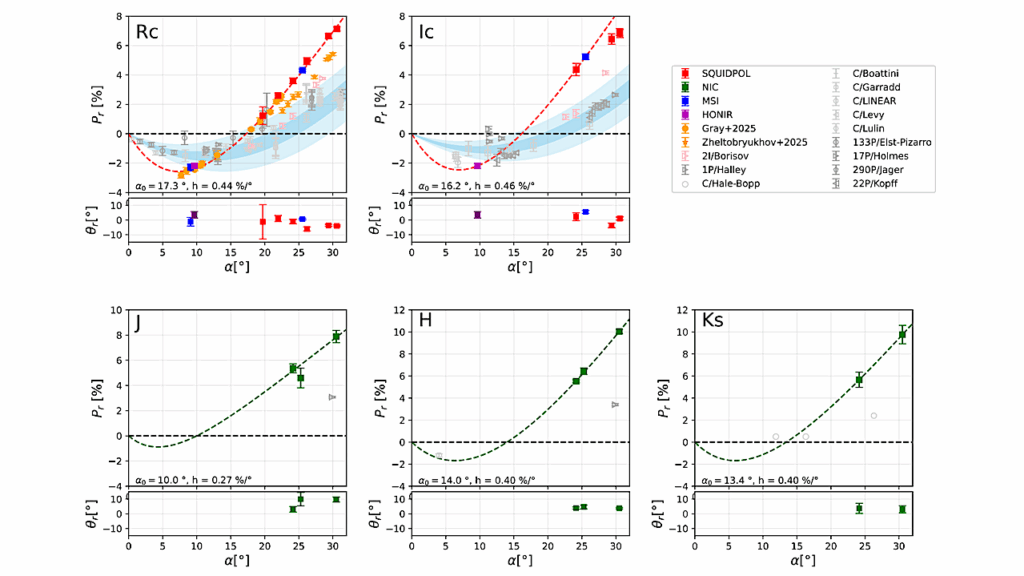Scaling K2 VII: Evidence For A High Occurrence Rate Of Hot Sub-Neptunes At Intermediate Ages

The NASA K2 mission obtained high precision time-series photometry for four young clusters, including the near-twin 600-800 Myr-old Praesepe and Hyades clusters.
Hot sub-Neptunes are highly prone to mass-loss mechanisms, given their proximity to the the host star and the weakly bound gaseous envelopes, and analyzing this population at young ages can provide strong constraints on planetary evolution models.
Using our automated transit detection pipeline, we recover 15 planet candidates across the two clusters, including 10 previously confirmed planets. We find a hot sub-Neptune occurrence rate of 79-107% for GKM stars in the Praesepe cluster. This is 2.5-3.5 sigma higher than the occurrence rate of 16.54+1.00-0.98% for the same planets orbiting the ~3-9 Gyr-old GKM field stars observed by K2, even after accounting for the slightly super-solar metallicity ([Fe/H]~0.2 dex) of the Praesepe cluster.
We examine the effect of adding ~100 targets from the Hyades cluster, and extending the planet parameter space under examination, and find similarly high occurrence rates in both cases. The high occurrence rate of young, hot sub-Neptunes could indicate either that these planets are undergoing atmospheric evolution as they age, or that planetary systems that formed when the Galaxy was much younger are substantially different than from today.
Under the assumption of the atmospheric mass-loss scenario, a significantly higher occurrence rate of these planets at the intermediate ages of Praesepe and Hyades appears more consistent with the core-powered mass loss scenario sculpting the hot sub-Neptune population, compared to the photoevaporation scenario.
Jessie L. Christiansen, Jon K. Zink, Kevin K. Hardegree-Ullman, Rachel B. Fernandes, Philip F. Hopkins, Luisa M. Rebull, Kiersten M. Boley, Galen J. Bergsten, Sakhee Bhure
Comments: 14 pages, 6 figures, published in AJ
Subjects: Earth and Planetary Astrophysics (astro-ph.EP)
Cite as: arXiv:2311.18709 [astro-ph.EP] (or arXiv:2311.18709v1 [astro-ph.EP] for this version)
Journal reference: Christiansen et al. (2023) AJ 166 248
Related DOI:
https://doi.org/10.3847/1538-3881/acf9f9
Focus to learn more
Submission history
From: Jessie Christiansen
[v1] Thu, 30 Nov 2023 17:01:19 UTC (8,168 KB)
https://arxiv.org/abs/2311.18709
Astrobiology,








